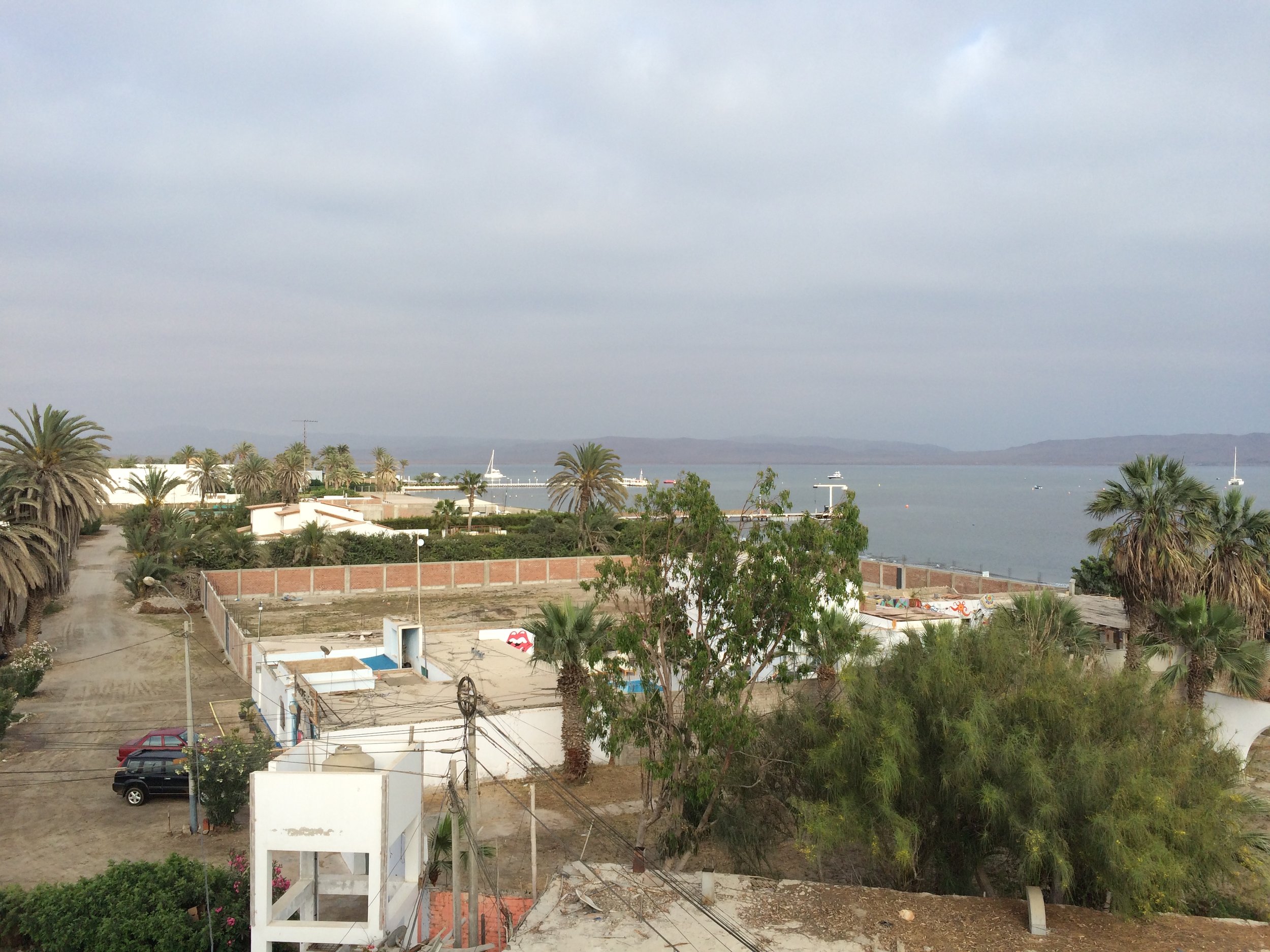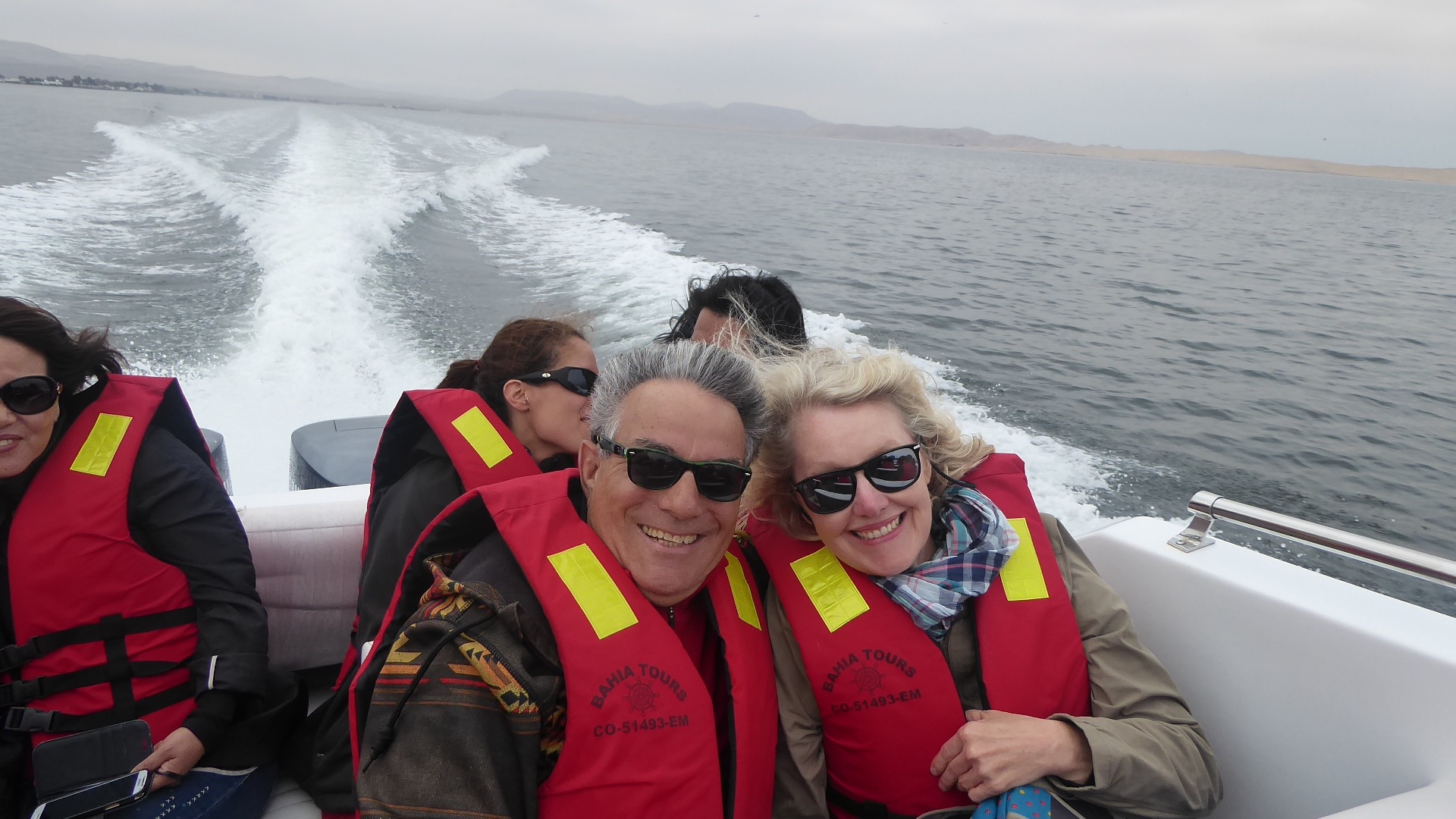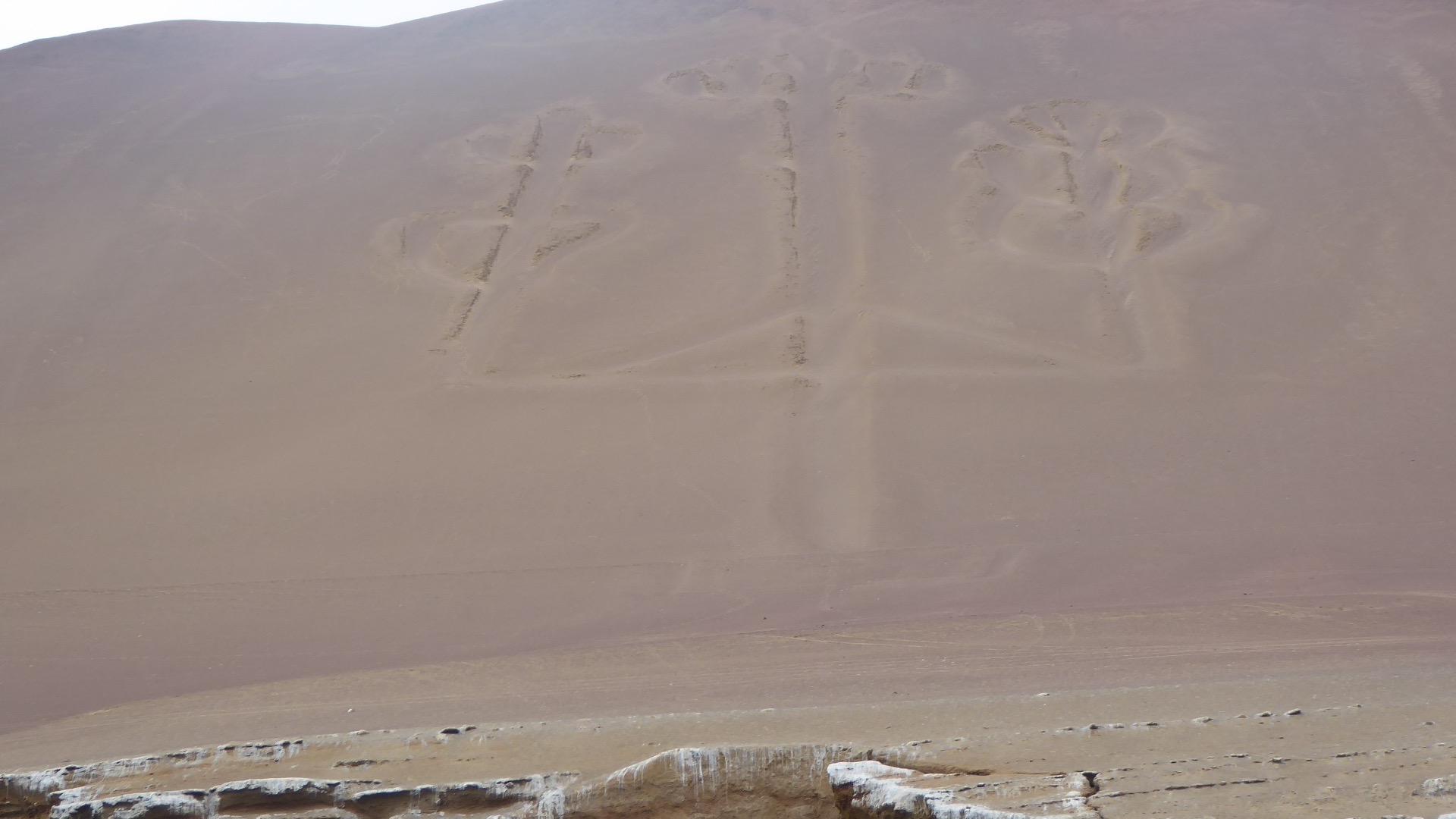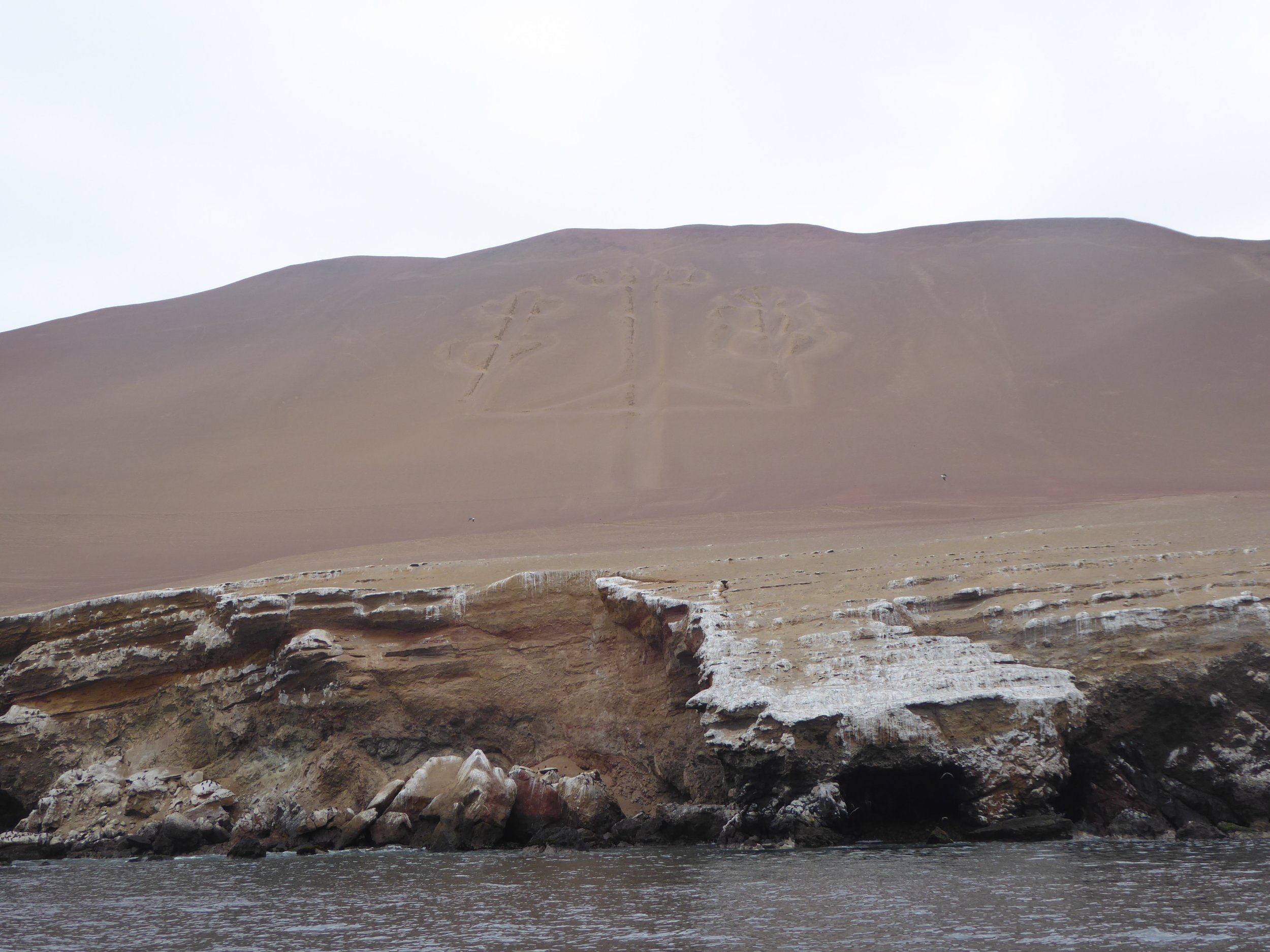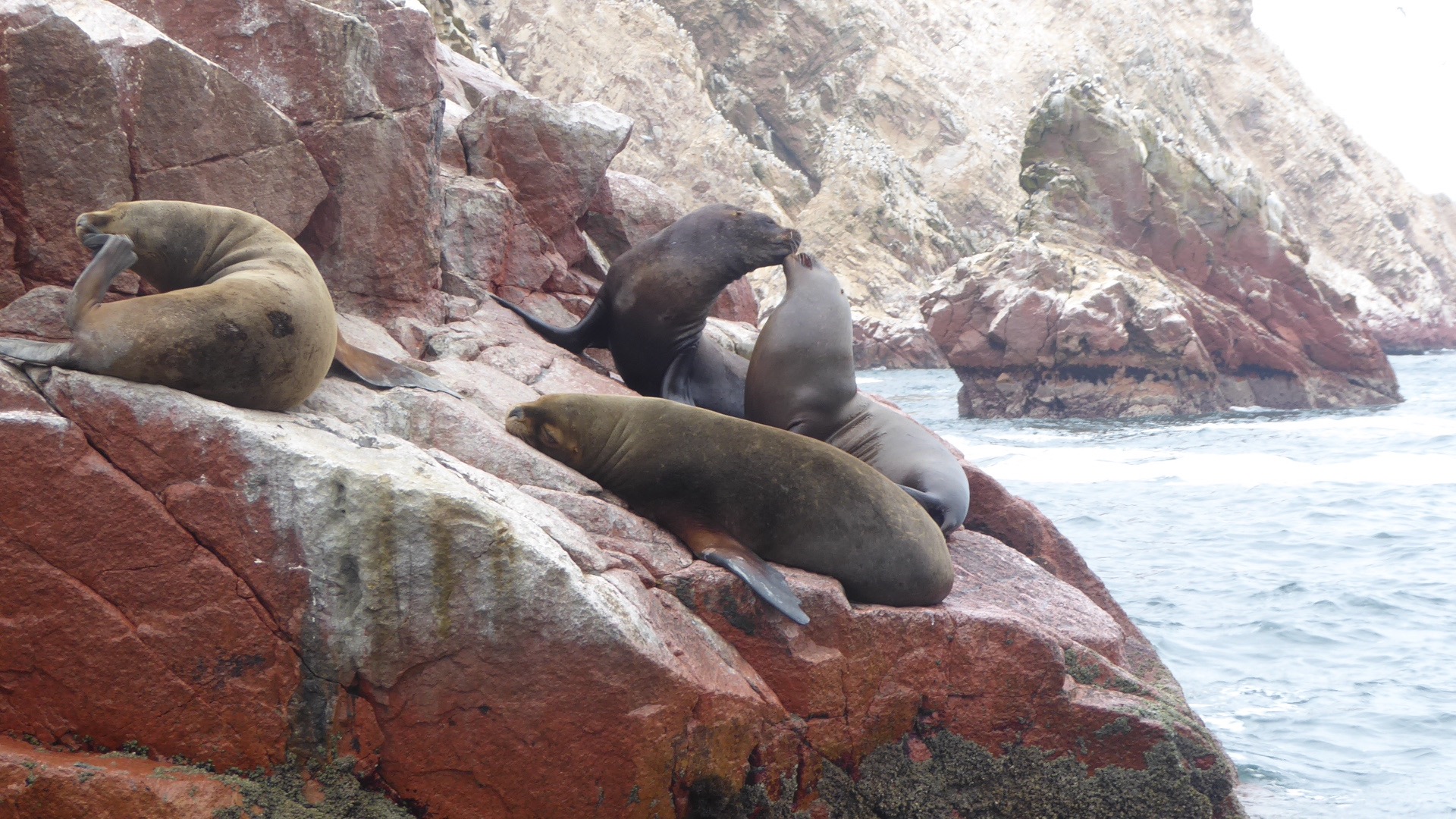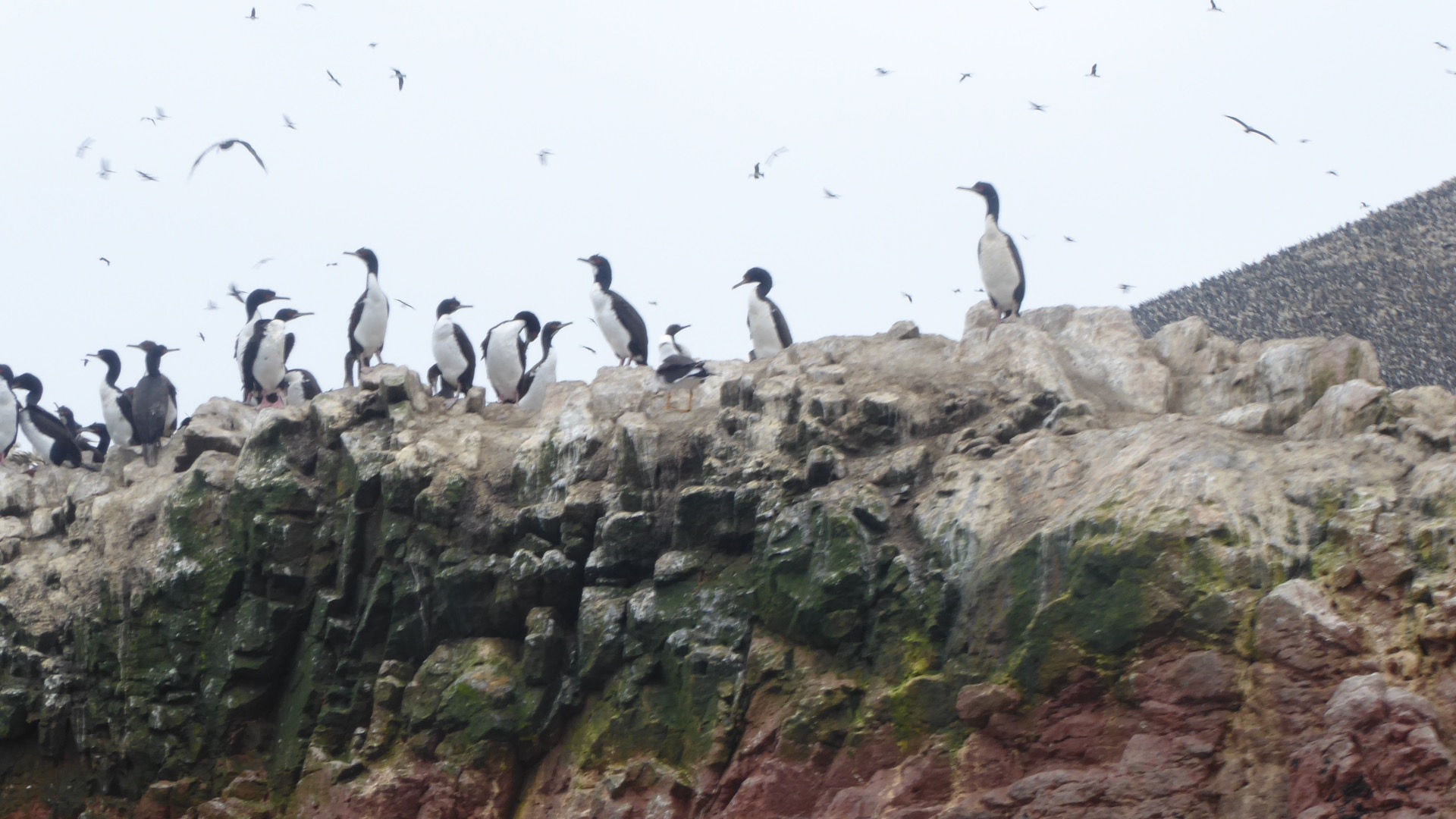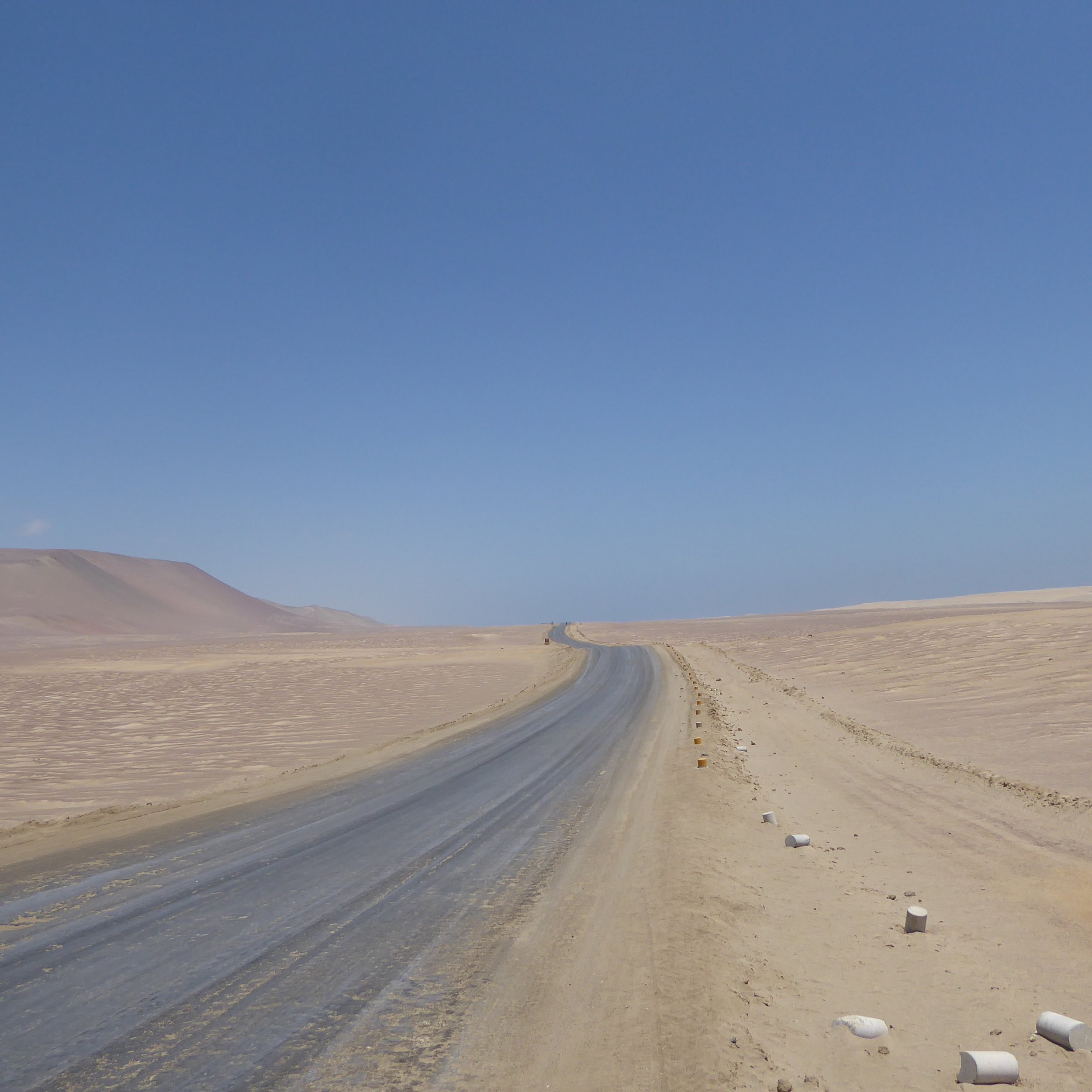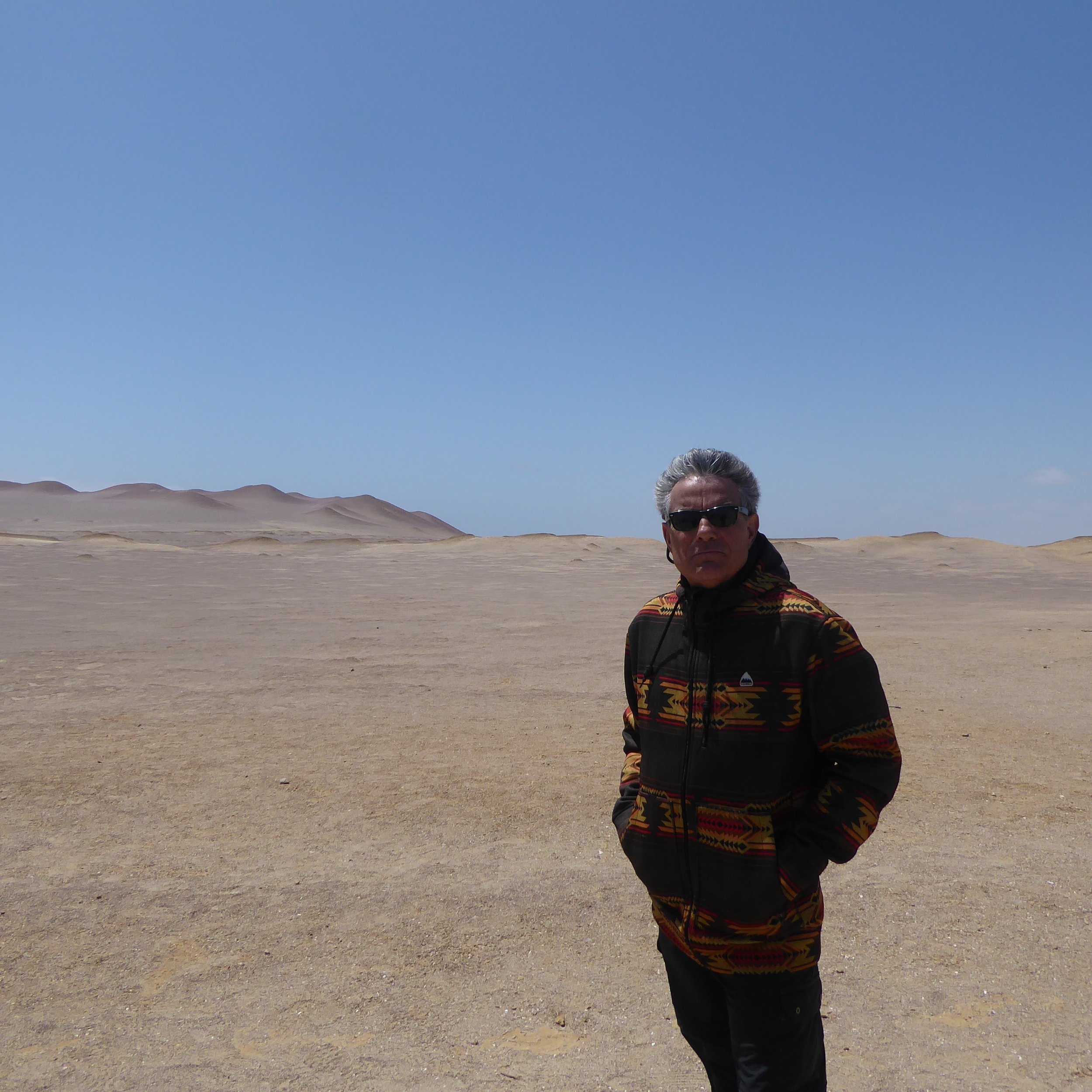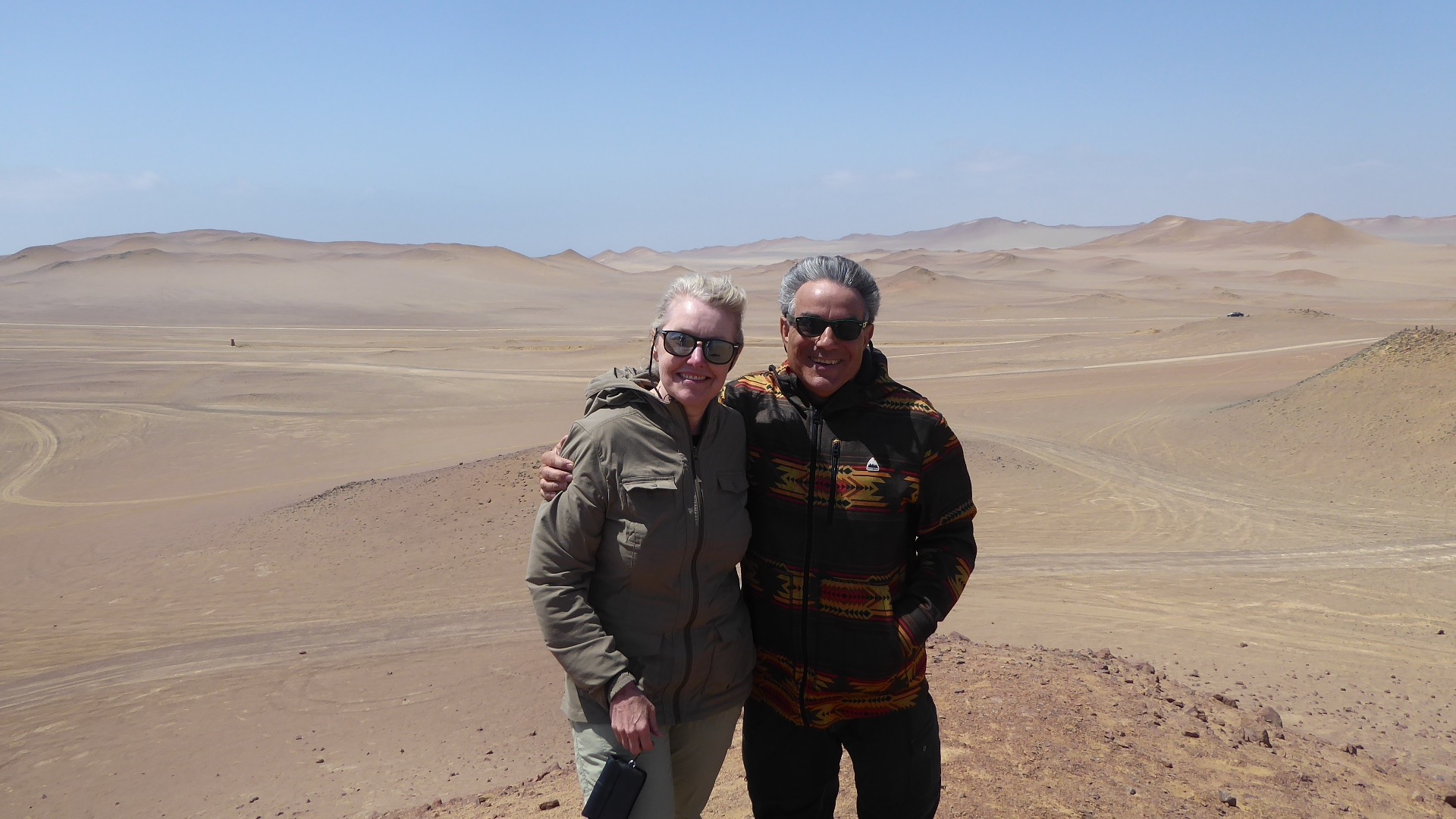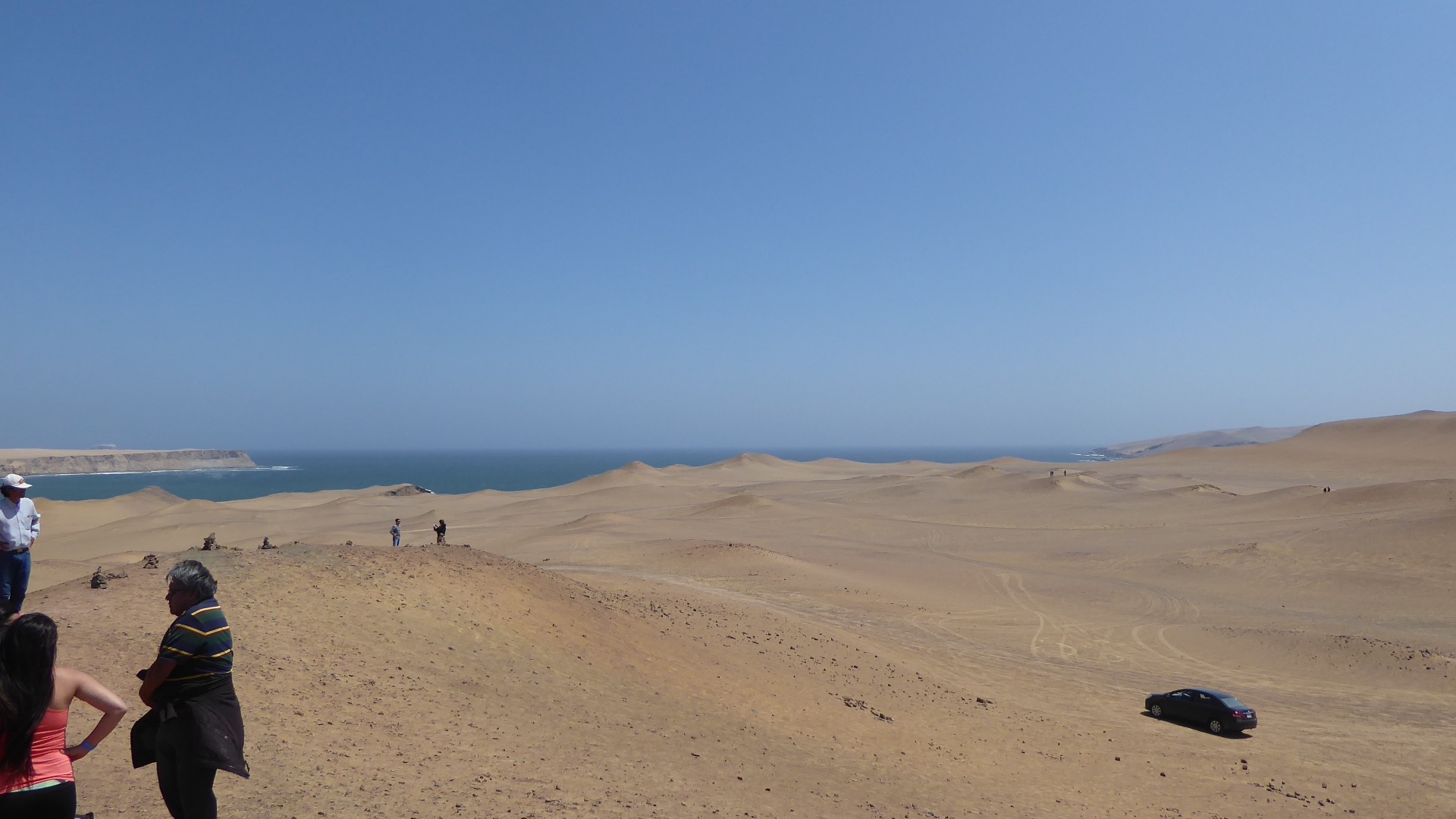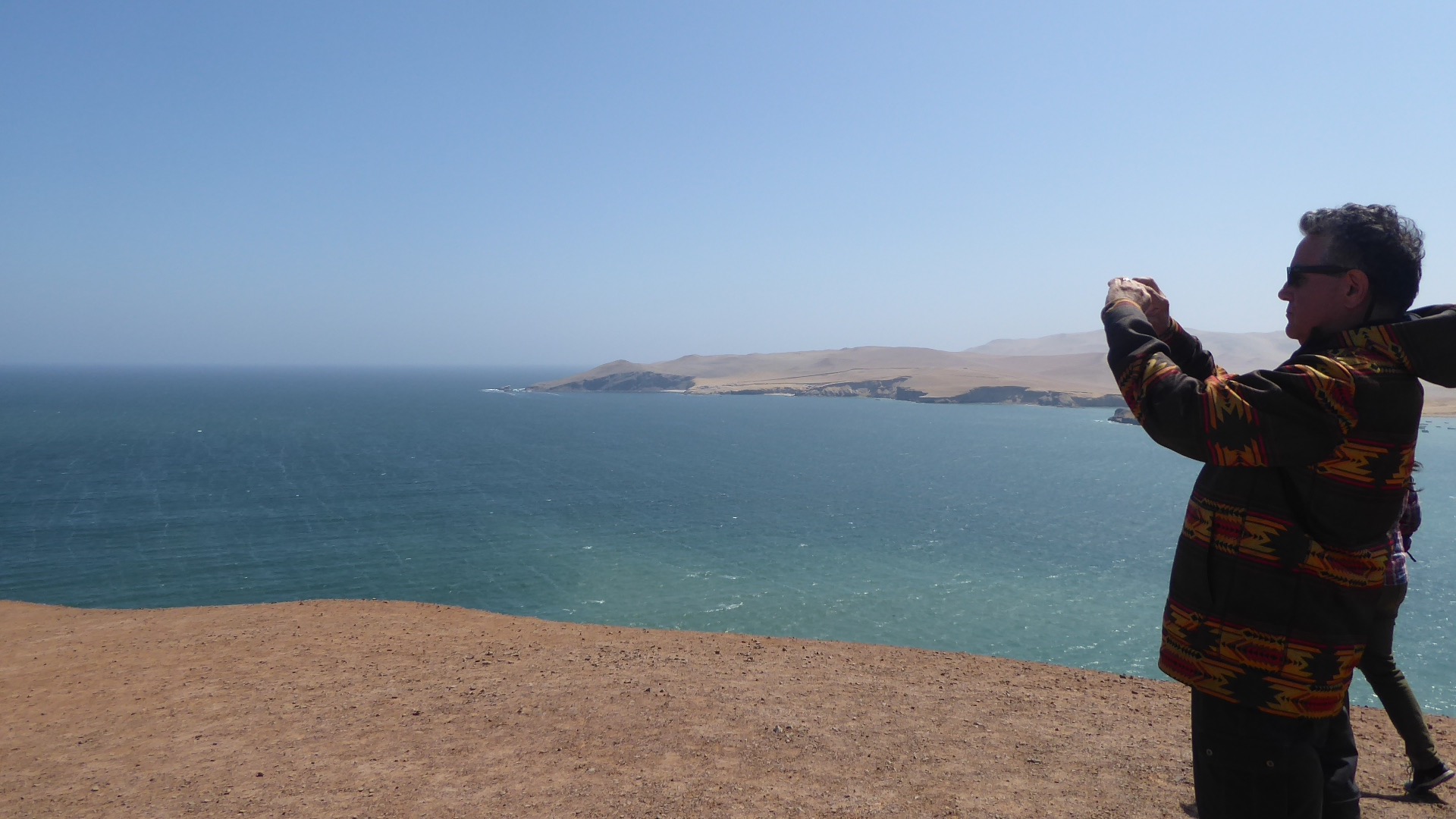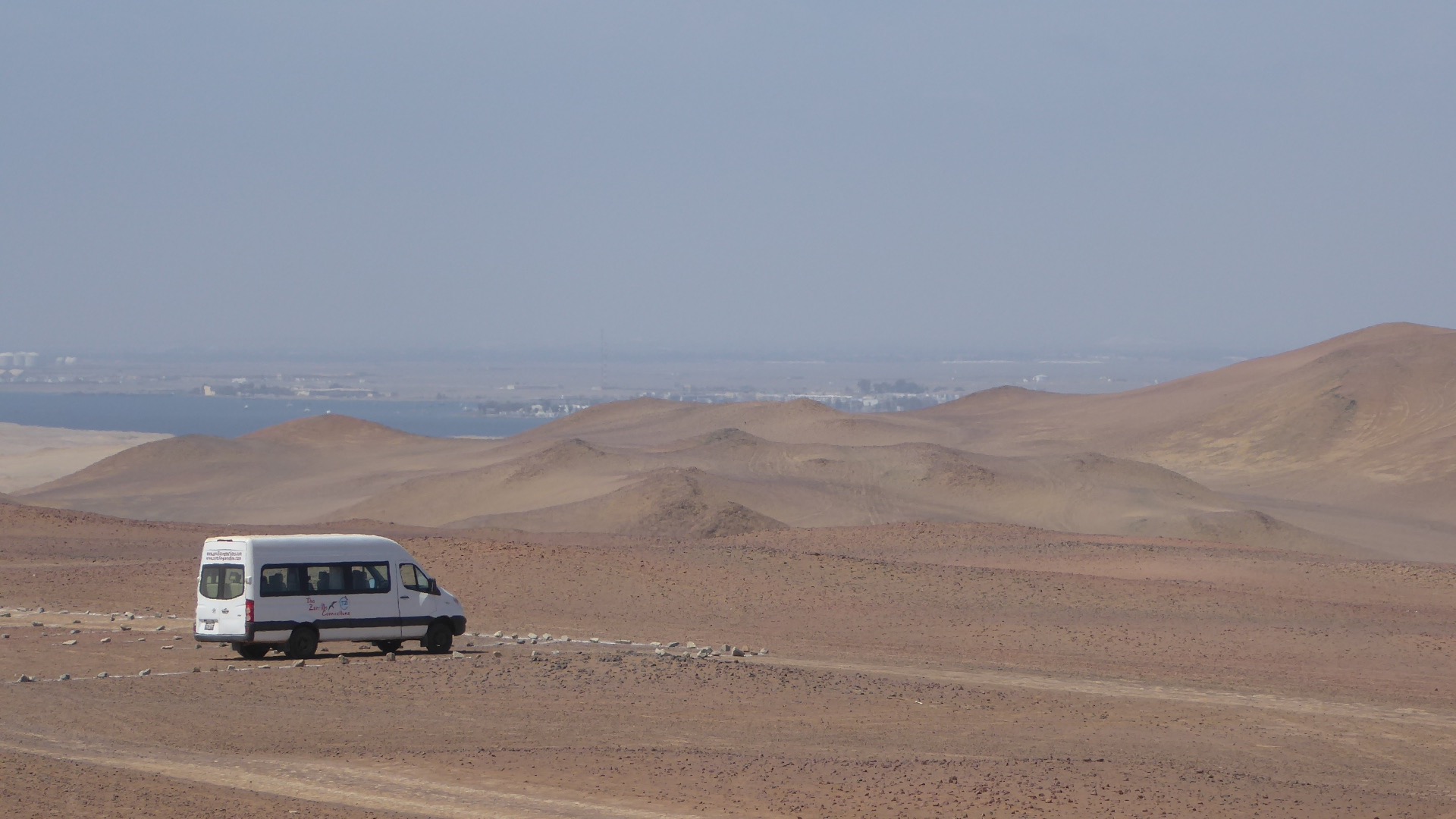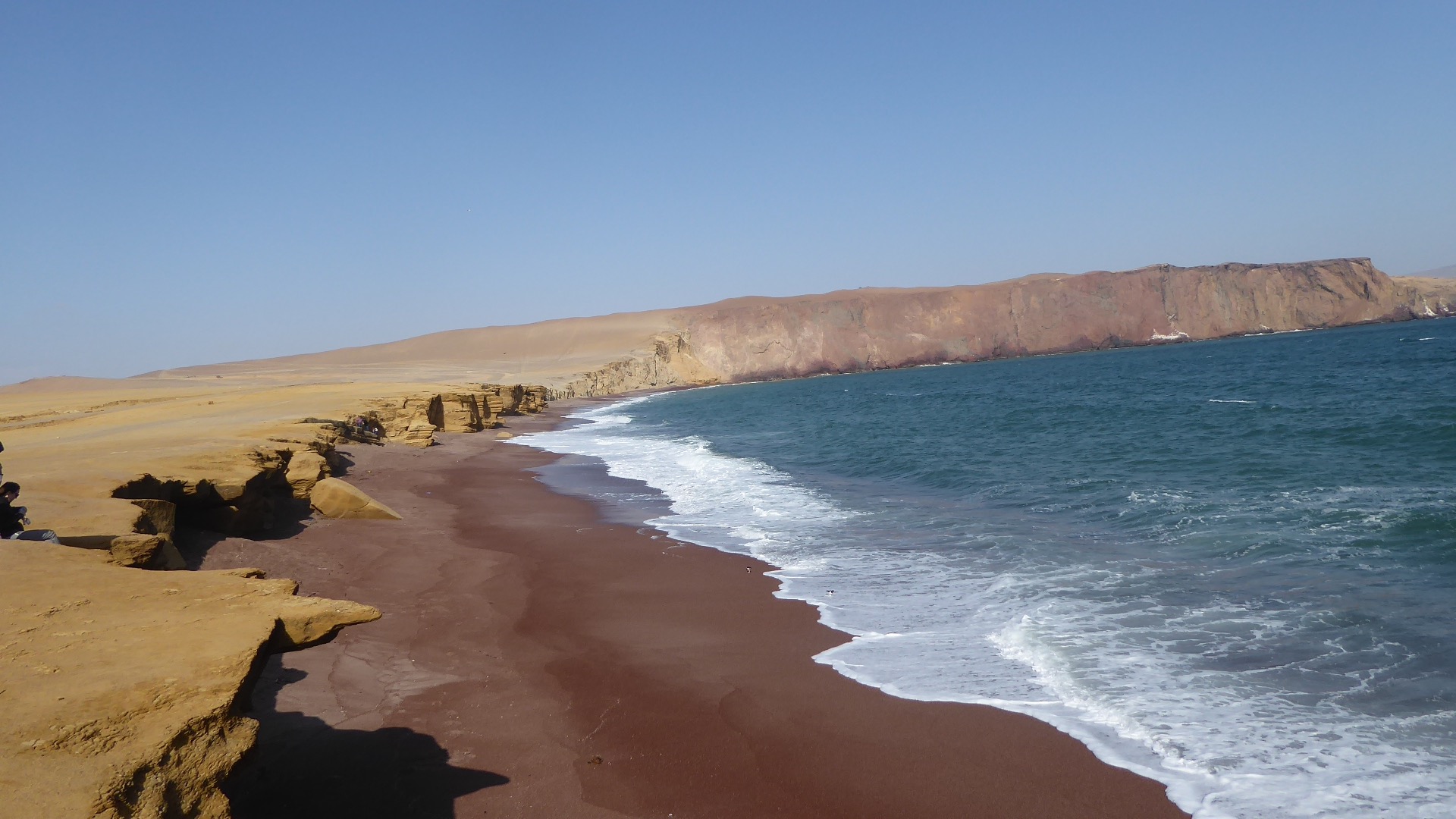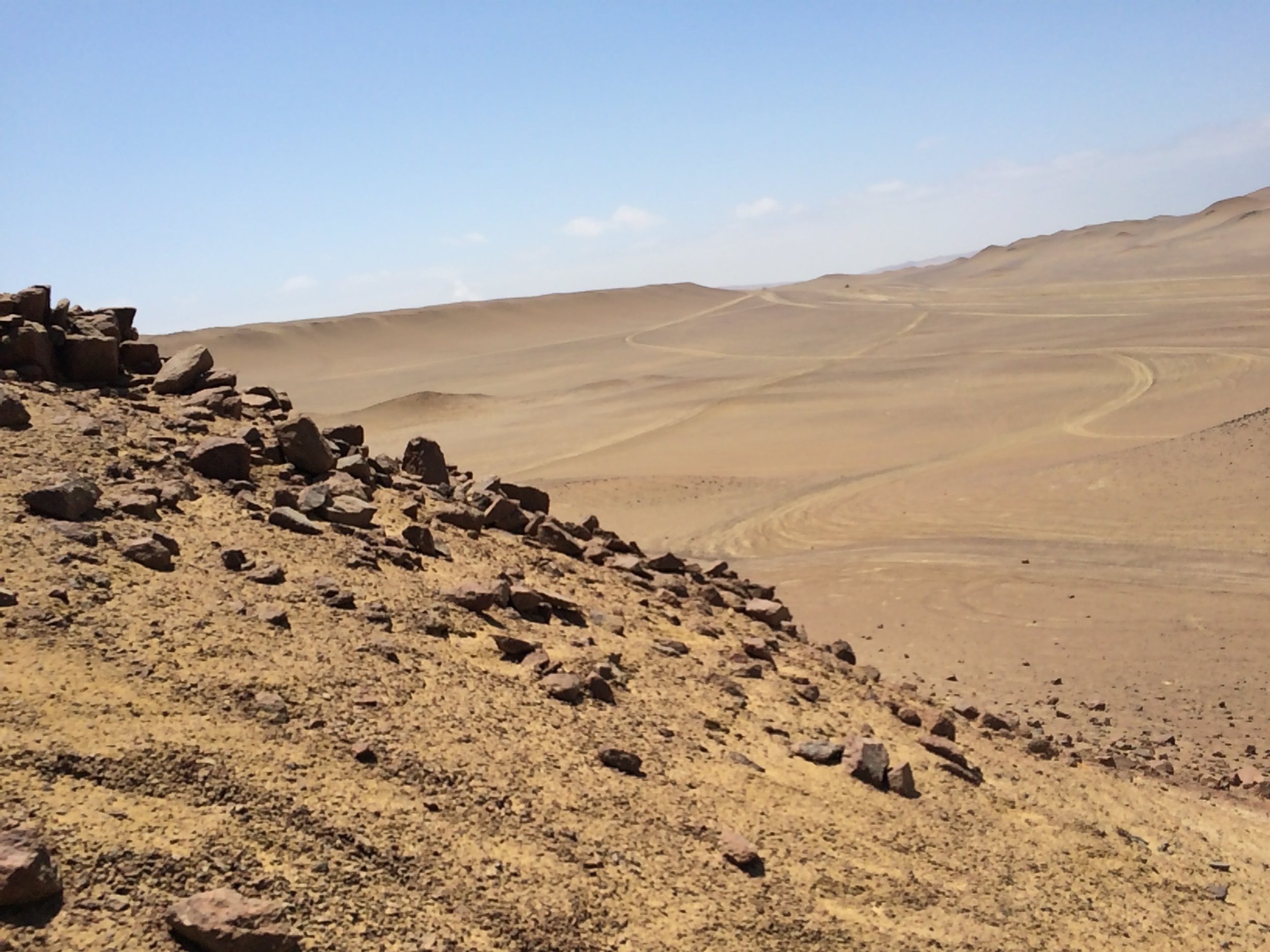Paracas—meaning “Sand Rain” I’m told, is a waterfront fishing town 4 hours south of Lima. The bus ride was smooth; the scenery unusual. Coastal Peru is relatively flat and dry, and the seemingly new tolled express highway we drove follows near the coastline.
On the costal side you can see large irrigated plots growing what appears to be grape vines, avocados, and corn. To the opposite side you can see petro or gas refineries in the distance, with small homes and some shanty towns closer to the highway. Periodically, as we drive the road winds closer to the coast and you can easily observe the sea. We are surprised when on the coastal side there starts to be advertisements and billboards for housing developments. Later we actually see very large gated residential communities painted blazing white. I mention the color because most places in Peru are concrete grey or unfinished at least in part. Who would live there--Expats or Peruvians? As the drive continued we were so hungry we actually ate Teriyaki flavored beef jerky. Thanks--you know who. We arrived at the Cruz Del Sur bus terminal in Paracas. The station was brand new, with a little construction going on. We could
actually order our excursions at the station—very quick and easy and unexpected. You come to Paracas for 2 reasons: (1) visit the Iles of Ballentas, and (2) visit the National Preserve of Paracas.
Ballentas Iles:
Our quirky hotel in Paracas
We awake at the Grand Palma hostel, new but a quirky lay out with twin beds. We have breakfast on the 4th floor deck overlooking the harbor. The fresh mango/papaya mixed fruit drink was the best. It is picturesque with fishing boats tied up or moving out to sea and the promenade and docks becoming busy. FYI-busy or not, the air is always pierced with honking car horns, not just taxis, but show offs too. In any event, transport picks us up at 7:15 and we gather at a city park by the shore. This is going to be a mixed group--mostly Spanish speakers. Other transports arrive and our guide appears-a very tall and handsome young man with a great smile. He gives us a short history lesson by the question and answer method. If you guess right you get a candy treat and he showed he had lots of treats. It is a hoot; all laughed; broke the ice. He does a really good job of talking in sentences and phrases of Spanish and English; easily understood. One particularly funny thing was the roll call where one of the quests was Japanese. Her first name was Keiko. “We have the famous Keiko here”, he said—“You didn’t know you would be so famous in my country.” The shy Japanese women smiled and shook her head-- yes. The thing is KEIKO Fujimori, is running for president of Peru in the 2016 election, and her first name is painted all over the country; as is the name of ATUNA, the other candidate. Keiko’s father, Alberto Fujimori (son of Japanese immigrants) was the former president of Peru until he lost the public trust AND was charged with bribery. But Keiko was elected to congress anyway and appears to have a good chance to win now—if winning the political sign wars means anything.
We walk the shoreline sidewalk passed 5-6 summer mansions that are just being refreshed by workers for the return of the owner. Summer starts in December here. We stop, and enter at one of many large docks where the 39 person capacity boat awaits. We 30 enter orderly, filling the back seats first for proper hydroplaning. Just as we are on our way, the guide goes on and on praising the magnificent, fantastic Captain. The Captain finally turns, like on cue, and flashes his pearly whites. Again another good comedy bit. He was a really good captain actually—moving us in very close to the rock formations that were being splashed by surf and waves. The isles appear to be partly formed of iron oxide as the islands are mostly metallic red. As we approached and passed the side of an adjoining peninsula we observed a giant sculpture that was carved through the sand and into the rock. This figure has been assigned a variety of names; “Devil’s Trident” or “Candelabra”—you can guess its shape; for political types, it has been offered that revolutionary “free Masons” drew the symbol to identify the beachhead landing place for the victorious Argentinian General San Martin, to land his troops to begin his fight to rid Peru of the Spaniards. I don’t know if that is true or not, but the image is impressive--an added treat. Gen. Martin did win and designed the first Peru flag with Flamingos and Palm Trees.
We approach these reddish isles with their amazing deep cut caves from wave action, some that could be passed through, and are greeted by tens of thousands of birds and tens of thousands of pounds of Guano staining the cliffs and everything else. The birds are squawking away, flapping their wings, and cover the entire islands. Be cautious about the over flight of the birds—do you have a hat? The guide starts pointing to the Penguins, first at the cliffs and then on the near shoreline, saying these are the same as on Galapagos. Many shoreline penguins wait for the wave to hit the rock and then slide into the surf. It is an impressive site. Then, even more exciting is seeing the sea lions sunbathing on spires of rock; each crowding or cuddling on top of the other, except for a few that are solo and crane their necks to see us as the captain moves the boat close to the spires of rock through crashing waves. One particularly large male sea lion was named “Frank” by the guide. As we circumvent the islands, the scene repeats, and we also see an elevated docking system for large ships. Apparently the guano is harvested and used as a component of commercial fertilizer. The show is over so we head back to shore and boy is sure has become it windy and cold. We return to tour transport and are driven to our next pickup point—to the national preserve.
National Preserve of Paracas: This preserve was an unexpectedly spectacular. Desert mountains surrounding a mammoth valley that runs to the sea in parts, composed of salt crystals and oxide iron particles.
When a hand full of soil is thrown up in the desert wind the particles blow apart like heavy rains, i.e. “Sand rain" or Paracas. The winds are high here. The colors are fantastic. The multi shaded sands run up and over rolling hills and then down to the blue sea, with fishing boats in a close harbor. “It never rains here, this is the driest place on the planet”, the guide says. She draws a diagram in the sand as she explains the ocean current effects on this unusual coastal area composed of salt flats, multi colored hills and terrain, and in one area the “Red Beach”. This too, is an amazing place.
Frank with Ceviche and INCA GOLD
A side note: (1) Janet was conversing with the female guide and asked where she was from? The guide responded “Chanca Alta, 2 hours north.” She then volunteered: “My ancestors were brought from Africa to be slaves by the Spanish. They worked very hard”. (Actually earlier, I thought she looked Mayan; pretty, slightly darker skin but thin nosed). FYI-currently, there are 3% African/ Peruvians in the population. (2) I finally drank “INCA GOLD”, the soft drink of the gods. It looks like Mountain Dew soda in the bottle, BUT taste like Faygo Rock and Rye. (3) Ate Peruvian Scallop Ceviche at a restaurant at the desert harbor—tasted great--spicy with lime of course.
Day done until the next day bus trip. Off to Nazca
